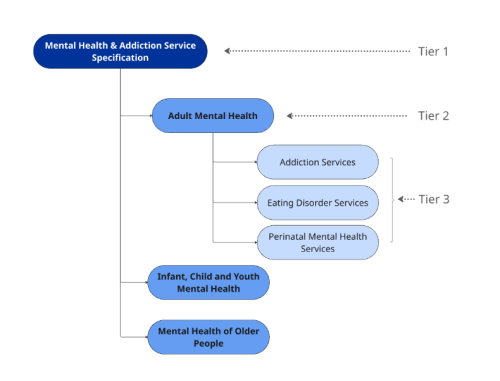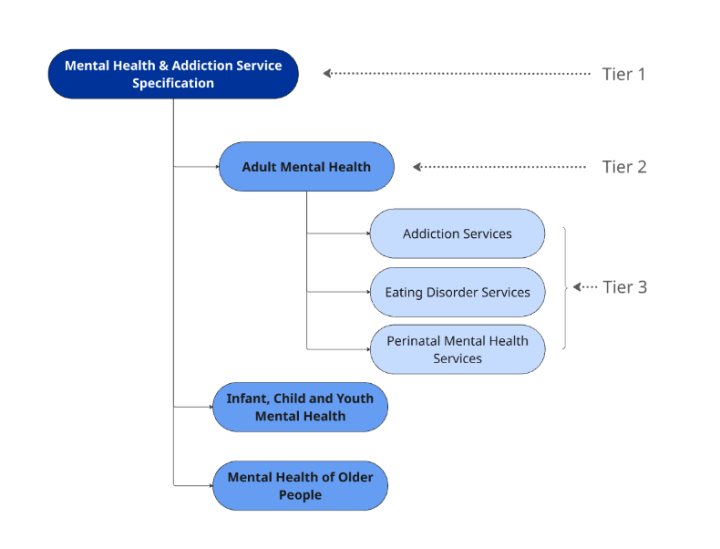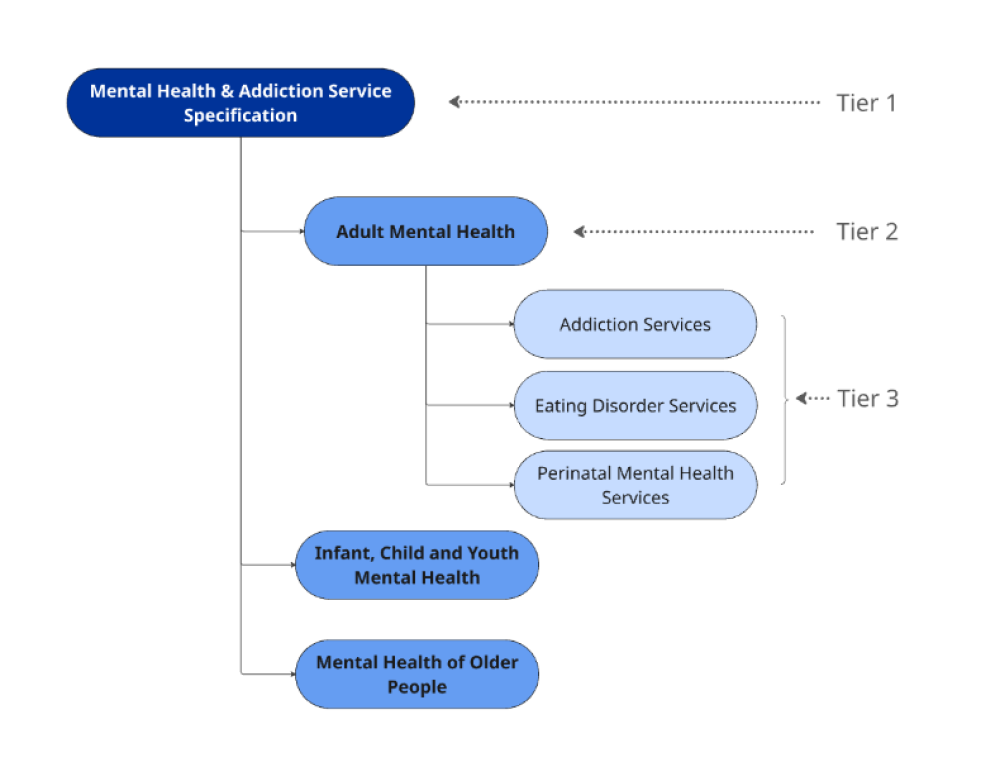On this page
Introduction to the nationwide service specifications and their purposes
Nationwide service specifications provide national consistency to efficiently support provider service delivery, analysis and performance monitoring. They:
- clarify the services to be funded/provided and list the purchase unit codes used for the service
- provide standard minimum reporting requirements to support service performance reporting, analysis and planning
- ensure a common understanding of the components of services and linkages between them and other services
- ensure service specific requirements are applied consistently throughout the sector
- allow for auditing of the services as needed
- ensure the service quality requirements are consistent.
Service specifications, where used, build on the Government’s Service Coverage Expectations document, to provide a level of operational detail for services.
Mandatory and recommended statuses
Nationwide service specifications are published with either Mandatory or Recommended status as a guide to the level of flexibility to amend the documents to fit local agreement needs.
- Mandatory status is assigned to many services for the purposes of national consistency, usually for reporting information, counting activity and quality requirements.
- Recommended status is assigned to smaller number of services which may not yet be nationally available, or may be emerging as a national service in New Zealand. The specifications are recommended for use when commissioning this service, and can be augmented with additional detail if required.
The status of service specifications will be reviewed over time and as commissioning needs arise.
Tiered system – how the service specifications are structured
A nesting tier structure is used to avoid repetition of content and elements that are common to a range or group of services.The tier structure should support the funder and provider's understanding of the total description of the service to be delivered and provide flexibility to allow for a funder to add additional provider quality specifications or reporting requirements to an agreement with a provider.



Nationwide Service Specifications use a 3-tiered structure. Each tier describes the service
at a different level of detail
Nationwide Service Specifications use a 3-tiered structure. Each tier describes the service at a different level of detail.
- Tier 1 are overarching service specifications that contains generic principles and content common to all the tiered specifications below it. (May also contain service guidelines in the appendices for services without service specifications).
- Tier 2 includes the elements specific to that particular service and includes a reference to its generic overarching document so that the total service requirements are explicit.
- Tier 3 are more detailed specific service descriptions for specific services
Current nationwide service specifications
All the current Nationwide Service Specifications, organised by service group.
- Ambulance services specifications
- Child and youth health service specifications
- Community health, transitional and support service specifications
- Community referred diagnostic and testing service specifications
- Disability support service specifications (external link)
- Maternity service specifications
- Mental health and addiction service specifications
- Oral health service specifications
- Public health service specifications and performance measurement tables
- Specialist medical services specifications
- Specialist surgical service specifications